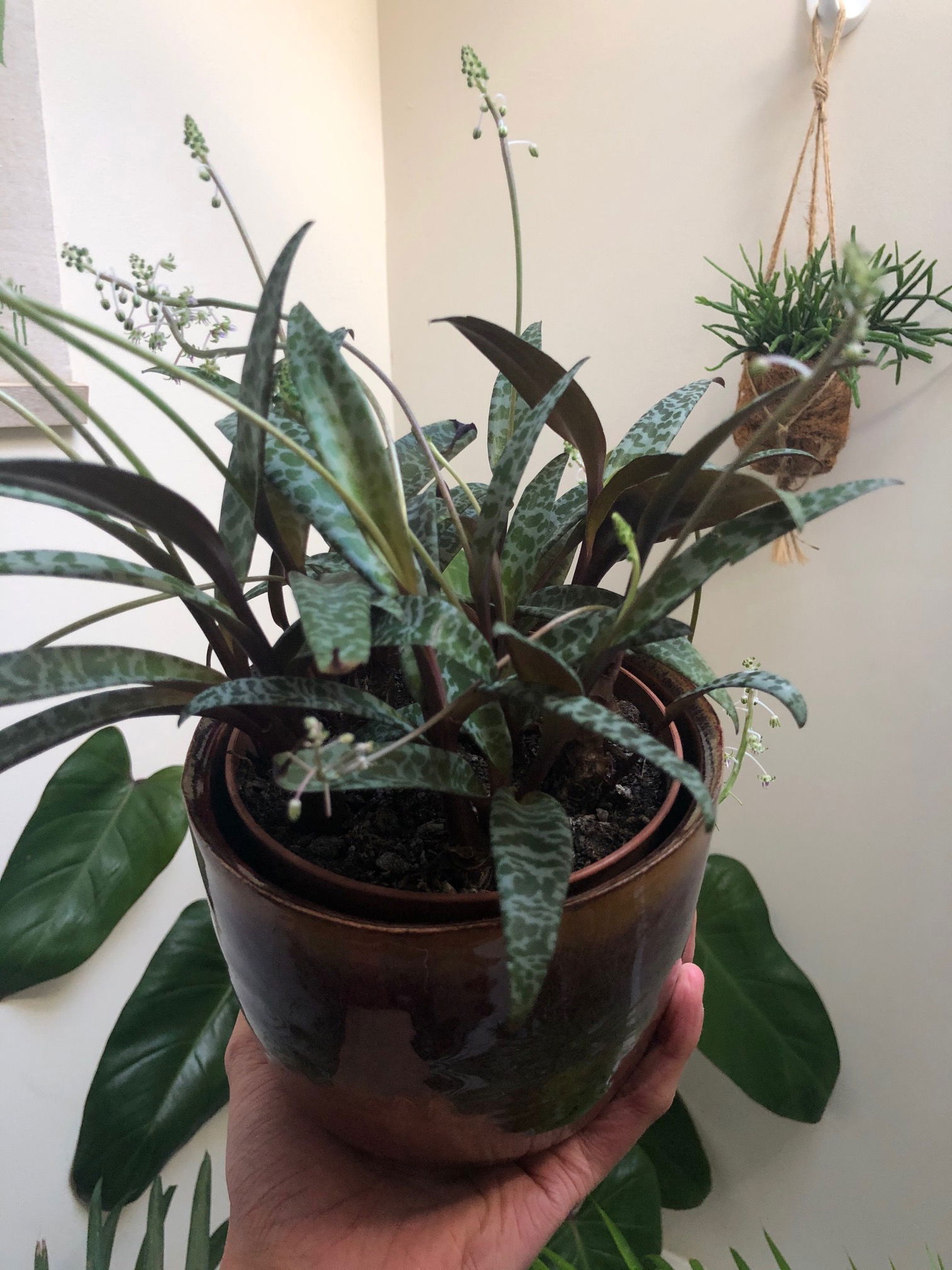
Ledebouria socialis
Contents
- Top Tips
- Location, Water, Humidity & Fertilisation
- Common Issues
- Origins, Temperature, Propagation, Repotting & Toxicity.
Need the answer to a specific plant query? Book a 1-to-1 video call with Joe Bagley, the website's friendly author, to overcome and address your niggling problem! Available on iMessage, WhatsApp, Facebook Messenger & more.
Top Tips & Info
- Care Difficulty - Easy
- Provide a bright location with no more than a few hours of sunlight per day, especially in the height of summer - shady areas must be avoided at all costs, so 'bright, indirect light' is acceptable.
- It's best to allow the soil's majority to dry out in between hydrations. If you're stuck with when to water it, think of the ukhouseplants' phrase of 'Drenches Between Droughts'.
- Fertilise every two or three months using either a 'Cactus' or 'Houseplant' labelled feed.
- Repot every three to four years during the spring, using a 'Cactus & Succulent' labelled potting mix. If you're interested in producing a show of winter blooms, keep the specimen potbound and slightly under-watered in the cooler months to restrict the root system. Scroll down to 'Flowers' for more information on this.
- Keep an eye out for Mealybugs & Scale that'll hide in the plant's cubbyholes.
Location & Light - 🔸🔸🔸
Perfecting the amount of light a Silver Squill receives is crucial for a long-lasting specimen. During the spring and summer, be sure to provide a brightly lit spot away from any direct light. Excessive exposure during this time will negatively affect the plant in the likes of sun-scorch and dehydration. Once the autumn kicks in, be sure to include an hour or two of direct light per day to get it through the dormancy period, lasting until the following spring. Due to the species' intolerance to low light, avoid placing one in areas where a newspaper can’t be read without the use of artificial light.
Water - 🔸
The ukhouseplants saying of 'drenches between droughts' should be applied to this plant. Not only will continuous soil moisture ruin their root systems, but it'll also increase the risk of 'heart rot' which essentially will destroy the plant from its bulbous centre. Allow almost all of the soil to thoroughly dry out in between waters in the growing period, reducing this further in the autumn and winter. If you're struggling when to hydrate it, feel the pot's weight and if it needs a water, it'll be rather light (instead of being heavy). Under-watering symptoms include a shrivelled stem, yellowing leaves, little to no growth and dry, crispy patches forming on the leaf edges. These issues are usually caused by too much light/heat or forgetfulness. Remember, the brighter the location, the more watering you'll need to do. Over-watering symptoms include a weakened or rotten stem, no new growth, yellowing lower leaves and eventual plant death. The differences between under and over-watering can be very similar, with a rotten root ball or bulb being the obvious difference.
Humidity -
This is not a necessity; however, a quick hose down from time to time will hydrate the leaves and wash away dust or potential pests.
Fertilisation - 🔸
Fertilise every two months during the growing period and every three months in the autumn & winter to replicate its dormancy period. Although a 'Houseplant' fertiliser will still do the job, we'd recommend using a specific 'Cactus' labelled feed as it'll support the vital thirteen nutrients that this species will need to grow.
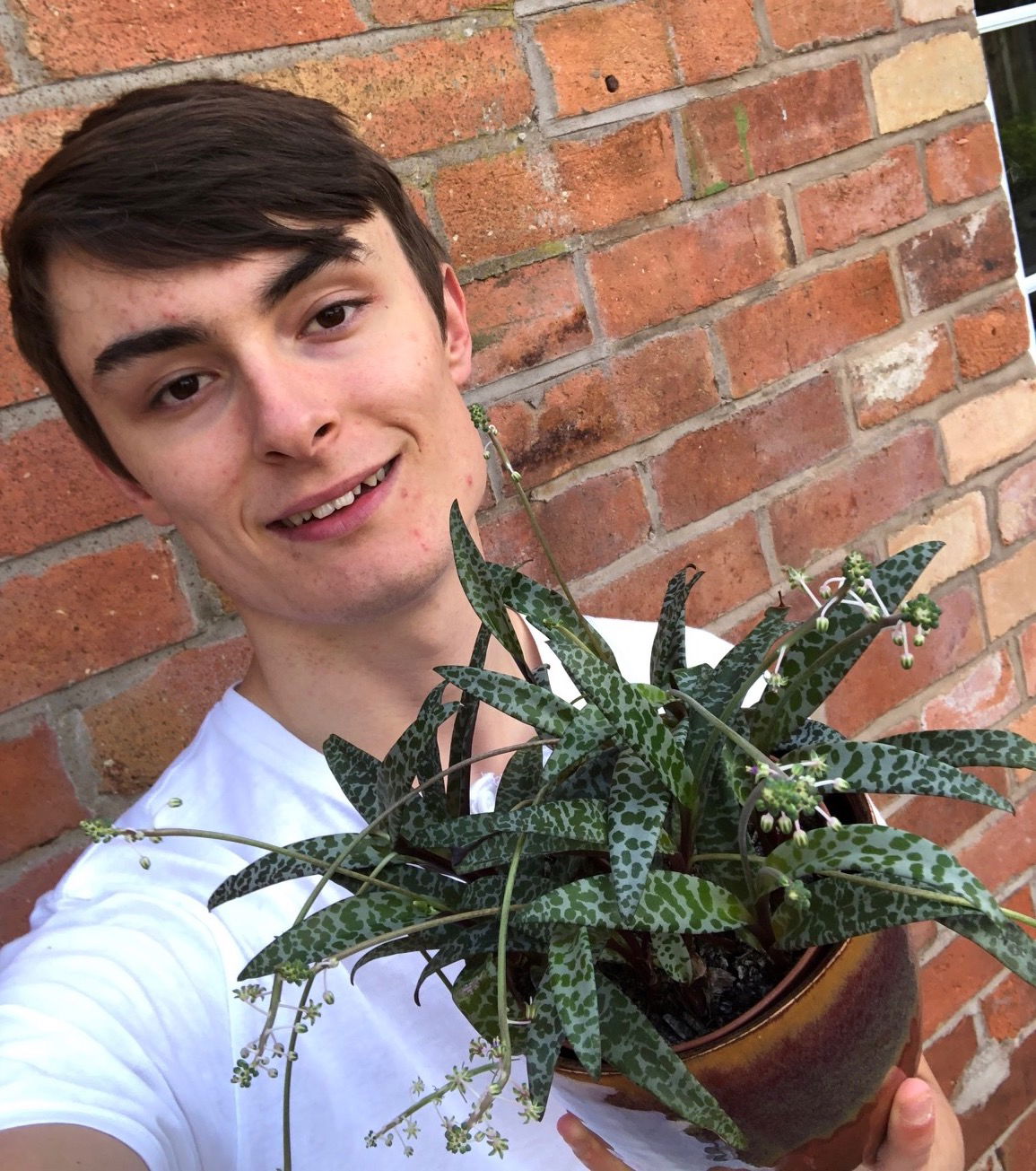 The intriguing patterns of the foliage is something many collectors admire. Here, you see the writer of ukhouseplants' posing with his flowering specimen earlier in 2020.
The intriguing patterns of the foliage is something many collectors admire. Here, you see the writer of ukhouseplants' posing with his flowering specimen earlier in 2020.
Common Issues with Silver Squills
A loss of variegations and leggy growth is caused by too little light. Although Silver Squills are an excellent choice for shady locations, it'll come at the cost of its variegations. Move the plant into a brighter area with minimal direct sunlight to allow the variegations to appear on the new growth. If you aren't entirely displeased about the loss, simply skip this step. Alternatively, extreme variegations that hinder the plant from developing chlorophyll (green pigmentation) is typically caused by too much sunlight.
Root rot is another common issue with specimens sat in too moist or waterlogged soil for long periods. Symptoms include rapidly yellowing leaves, stunted growth and a rotten brown caudex. Take the plant out of the pot and inspect its health below the soil line. If the roots sport a yellow tinge, you're good to go, but if they're brown and mushy, action must be taken immediately. More information about addressing root rot can be found on this link.
Curled leaves and dried brown edges are the result of too little water and over-exposure to the sun. Although they can naturally do well in sun-filled locations, those that haven't acclimatised to the harsh rays will show signs of sun-scorch and environmental shock. Prolonged exposure will significantly speed the process of dehydration, so consider transplantation into a bigger pot in the spring to wrap the roots around moister soil.
Directly pinpointing yellow leaves is rather challenging due to the many different issues that could be at fault. Problems include watering-related abuse, too much or too little light, and fertilisation issues. Always keep in mind that a gradual loss of older leaves (accompanied by reliable juvenile growth) is an inevitable part of ageing.
Never allow temperatures to dip below 3ºC (37ºF) as irreversible damage may occur in the likes of yellowed foliage and weakened growth. If this happens, remove the severely affected areas and immediately improve growing conditions - never cut through softened yellow growth, and only around brown, crispy squares. As rehabilitation can take several months because of its slow-growing nature, be sure to provide a stable location with better growing conditions to speed this process.
Mould or mushrooms developing on the soil means two things - too little light and over-watering. Despite the harmlessness, it'll prove unsightly to most gardeners and is therefore removed once known. To remove, replace the top two inches of the soil for a fresh batch of 'Cactus & Succulent' compost. Either increase the amount of light received (no direct sunlight for the first few weeks to prevent environmental shock) or decrease the frequency of waters slightly. If the mould is accompanied by yellowing lower leaves, you may also have a case of root rot.
A lack of flowers is caused by an insufficient dormancy period, where the temperatures are kept more or less the same over the year. Reduce the warmth by a couple of degrees over the autumn and winter, along with fewer irrigations to ensure a well-spent dormancy. As the environment remains on the cooler side, this may stimulate flower spikes on the maturer bulbs' terminals; scroll down to 'Flowers' for more information on this!
Origins
The Silver Squill was first described by John Baker as Scilla socialis in 1870, using the Latin words for 'Sea Onion' in reference to the bulbous appearance. The species was later transferred into Ledebouria in 1970 by John Jessop, honouring the German-Estonian botanist of Carl Friedrich von Ledebour. The species epithet, socialis, can be translated from Latin to mean 'dominance', which refers to the large growing habits in the wild. L. socialis has a natural distribution across the Eastern Cape of South Africa.
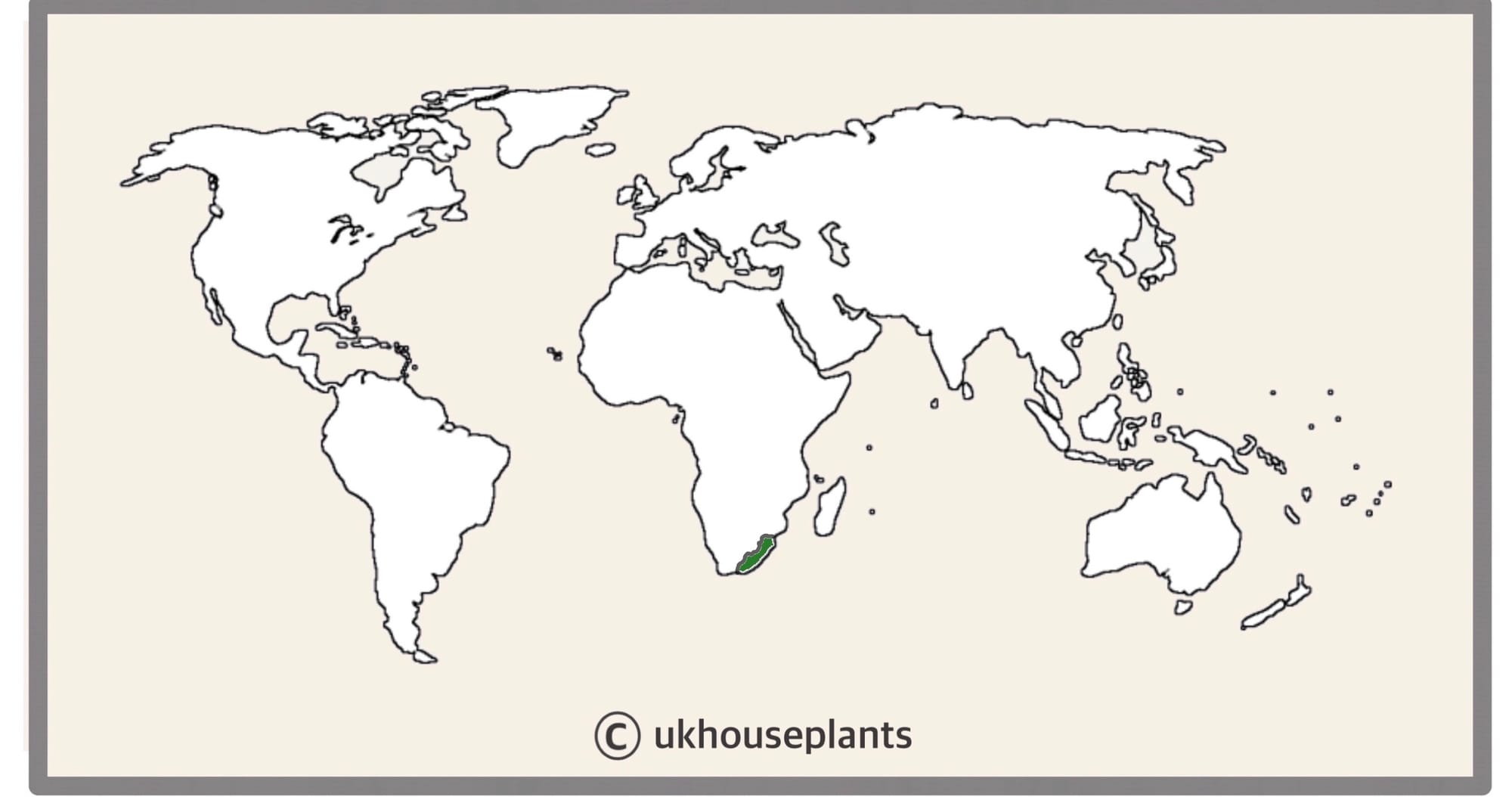 The Distribution of Ledebouria socialis.
The Distribution of Ledebouria socialis.
Temperature
0° - 32℃ (32° - 90℉)
H2 (Hardiness Zone 10) - Tolerant of temperatures above freezing; this plant will die if left in temperatures below frosts. Move to a conservatory or greenhouse until this risk has elapsed. If you decide to bring this plant outdoors, don't allow it to endure more than an hour of direct sunlight a day as it may result in sun-scorch. Regularly keep an eye out for pests, especially when re-introducing it back indoors.
Spread
The overall size can be up to 0.3m in height and 0.4 m in width. Ultimate height will take between 3 - 5 years to achieve when repotted every few years, with several new leaves unfurling per annum. After the ultimate height is reached, each bulb will start to produce basal offsets.
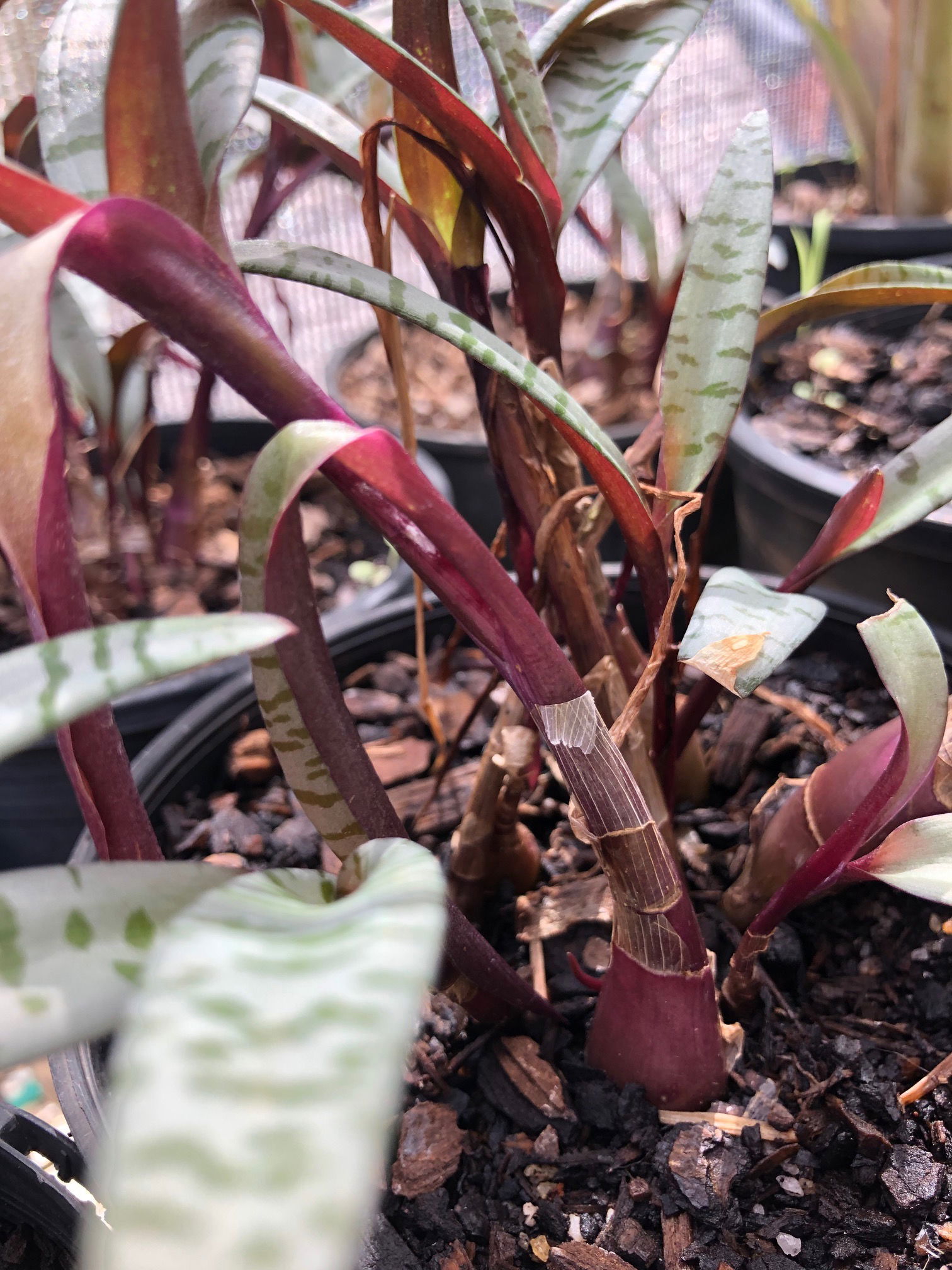 Mature specimens will become leggy over time, so it's important to provide enough natural light to downplay the rates of phototropism (growth towards the light source).
Mature specimens will become leggy over time, so it's important to provide enough natural light to downplay the rates of phototropism (growth towards the light source).
Pruning & Maintenance
Remove yellow or dying crispy leaves, and plant debris to encourage better-growing conditions. While pruning, always use clean scissors or shears to reduce the chance of bacterial and fungal diseases. Deadhead the individual flowers as they spend to improve the overall bloom time.
Propagation
Via Seed or Basal Offset Division (Pups).
Basal Offset Division (Easy to Moderate) - Your plant will produce several basal offsets that can be separated once they have a sufficient root system, and surpass 1cm (0.4 inches) in bulb diameter. If possible, water the soil 24hrs before the main event to reduce the risk of transplant shock when its dry root systems are over-fingered. Take the plant out of its pot and place your fingers close to the nodal junction - compost may have to be removed for better access. Push the chosen offset downwards until you hear a snap. Separate the foliage and its root system away from the mother plant, mentally noting the high risk of damage. Transplant in the appropriate sized pot with a fresh batch of 'Cactus & Succulent' compost. Maintain evenly moist soil and situate it in a bright, indirect location away from any direct sunlight. After eight weeks, treat it like a healthy specimen, following the care tips above!
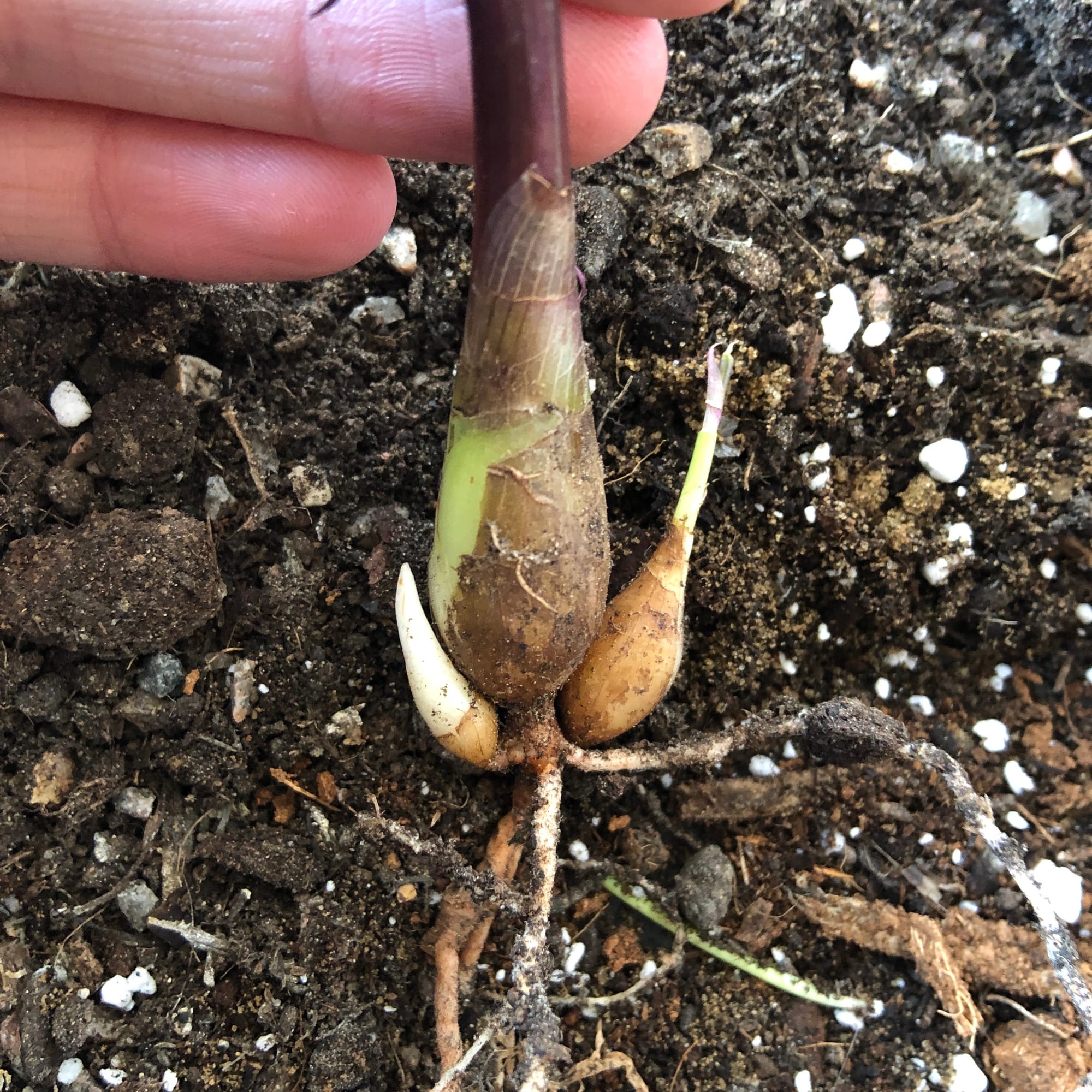 The best way to propagate your Silver Squill is by waiting for basal offsets to reach half the size of the mother plant.
The best way to propagate your Silver Squill is by waiting for basal offsets to reach half the size of the mother plant.
Flowers
Silver Squills will flower from late winter until early spring, producing minute pinky-white flowers along a 30cm (11 inches) shaft, originating from the bulb's centre. Each inflorescence can last up to five days, with the overall flowering process spread across several weeks.
To achieve a winter/spring bloom, you must provide a cool and dry dormancy period. From the end of autumn to early spring, water infrequently to avert the risk of over-watering and remember to present a bright location with temperatures gently fluctuating between the day and night around 12° - 16℃ (54° - 61℉) to provide an efficient resting period. From spring onwards, the natural temperature will begin to increase, with more frequent waters and fertilisation taking place. Remember to use a potassium-based fertiliser, for example, 'Tomato' food, to maximise the chance of a bloom during the latter stages of winter. If all is successful, you'll potentially see small flower stalks develop from the centre of each bulb, lasting up to a month from late winter onwards.
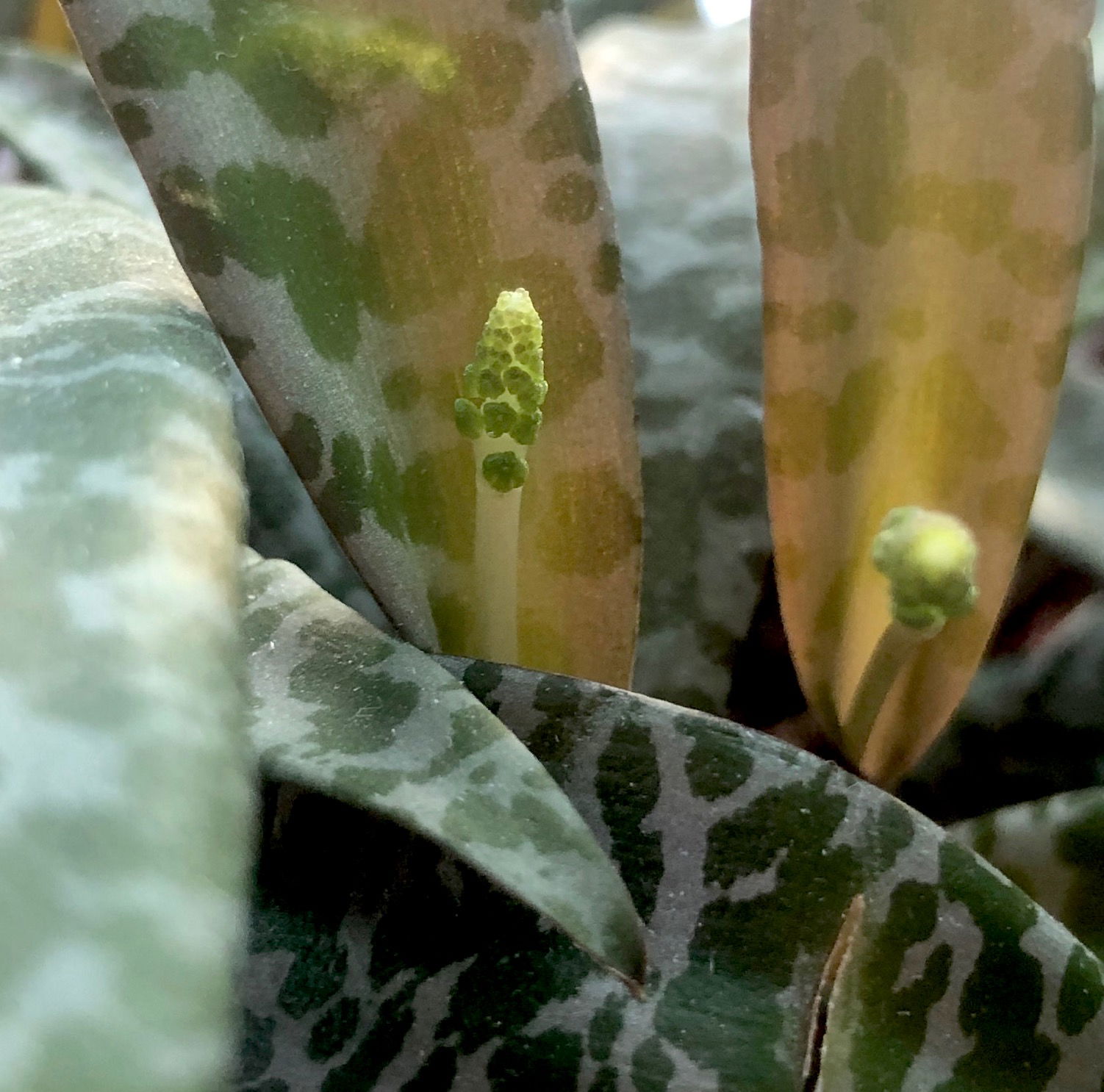 A developing flower shaft.
A developing flower shaft.
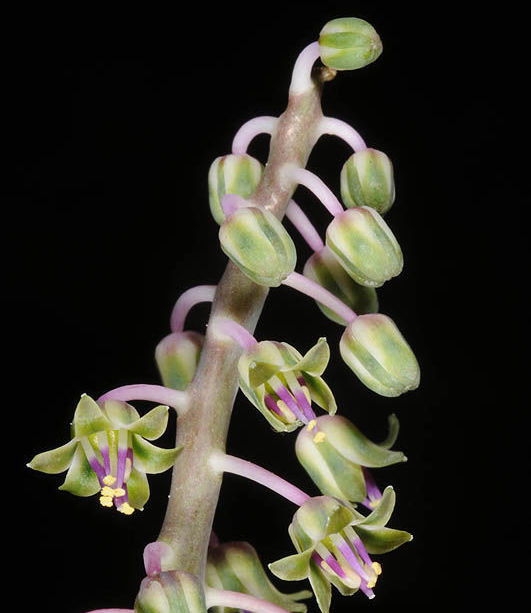 The inflorescence of Ledebouria socialis. Don't be fooled by the flower size in this photo - each individual inflorescence will only reach around 0.2cm in diameter! Copyright: The Jerusalem Botanical Gardens, Israel.
The inflorescence of Ledebouria socialis. Don't be fooled by the flower size in this photo - each individual inflorescence will only reach around 0.2cm in diameter! Copyright: The Jerusalem Botanical Gardens, Israel.
Repotting
Repot every three years in the spring, using a 'Cactus & Succulent' labelled potting mix and the next sized pot with adequate drainage. Silver Squills are far better potbound for several years due to the heightened risk of root rot and repotting-issues (like transplant shock) - so only repot if you feel it's wholly necessary.
Hydrate the plant 24hrs before tinkering with the roots to prevent the risk of transplant shock. For those situated in a darker location, introduce extra amounts of perlite and grit into the lower portion of the new soil to downplay over-watering risks. Click here for a detailed step-by-step guide on transplantation, or via this link to learn about repotting with root rot.
Book a 1-to-1 video call with Joe Bagley if you'd like a personal guide to repotting your houseplant. This will include recommending the right branded-compost and pot size, followed by a live video call whilst you transplant the specimen for step-by-step guidance and answer any further questions!
Pests & Diseases
Keep an eye out for mealybugs, aphids, spider mites, scale, thrips & root mealybugs that'll locate themselves in the cubbyholes and undersides of the leaves, with the exception of the latter in soil. Common diseases associated with Silver Squills are root rot, leaf-spot disease, botrytis, rust, powdery mildew & southern blight - click here to learn more about these issues.
Toxicity
This species is classified as poisonous; if parts of the plants are eaten, vomiting, nausea and a loss of appetite could occur. Consumption of large quantities must be dealt with quickly; acquire medical assistance for further information. The sap can also cause dermatitis and skin allergy to sensitive individuals, so be sure to wear gloves when handling.
Retail Locations
Online Stores.
Book a 1-to-1 Call with Joe Bagley
If you need further advice with your houseplants, book an advice call with ukhouseplants' friendly and expert writer today! This can be done via a video or audio call on most apps, including Facebook, FaceTime & Skype. A ten-minute call costs £3.99 (US$5), or £14.99 for thirty minutes. You can ask multiple questions, including queries on plants, pests, terrariums, repotting advice and anything in between. Please consider supporting this service to keep ukhouseplants thriving!